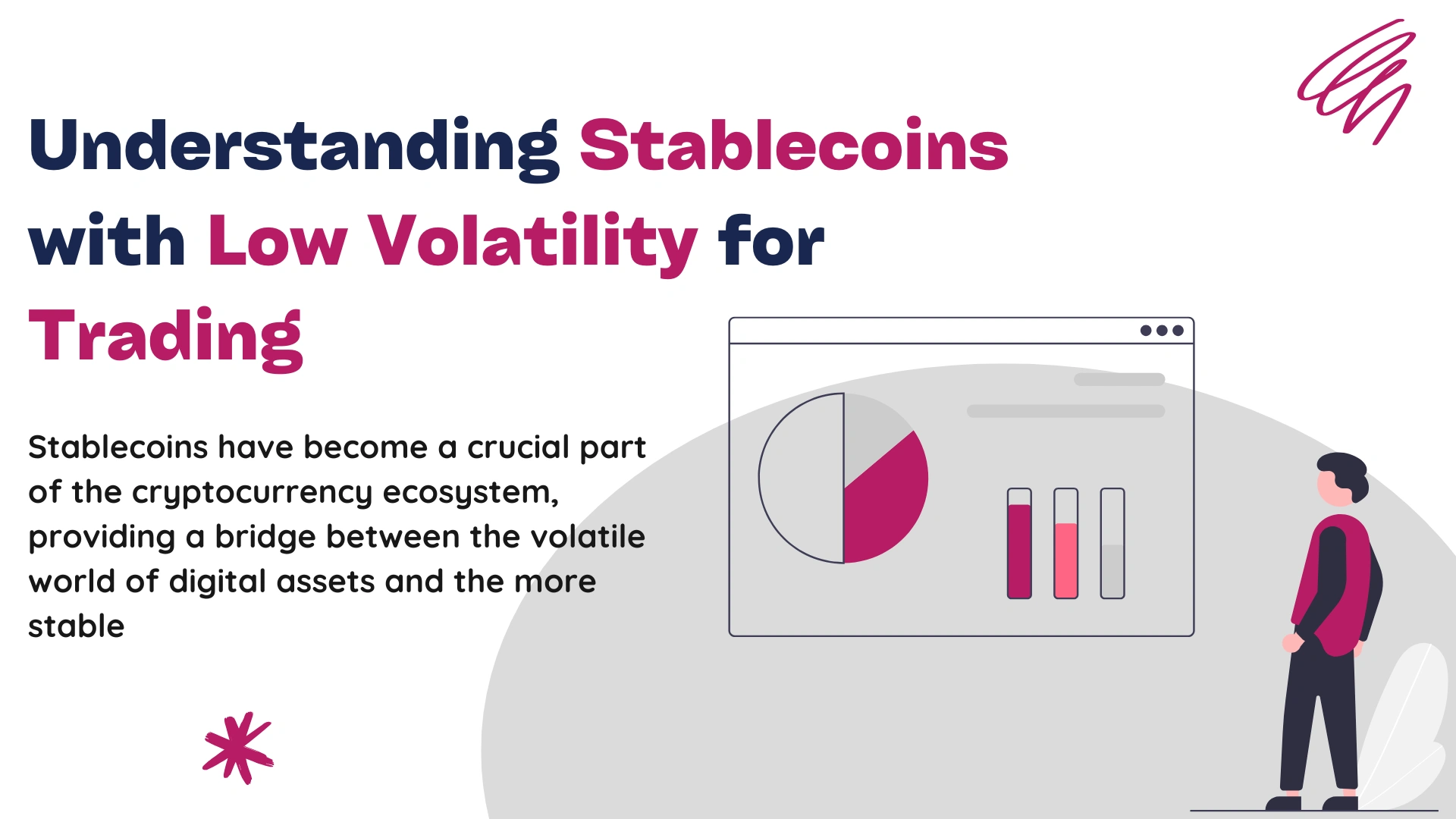What Are Stablecoins?
Stablecoins are digital assets designed to maintain a stable value relative to a fiat currency like the US Dollar, Euro, or other commodities such as gold. The idea behind stablecoins is to combine the benefits of blockchain technology with the stability of traditional currencies. They are typically backed by reserves (like cash or government bonds) or algorithmic mechanisms that adjust supply to maintain a stable price.

Key Features of Stablecoins with Low Volatility:
- Backing Mechanisms: Many stablecoins are backed by real-world assets. For instance, a popular type is the fiat-collateralized stablecoin (e.g., Tether USDT), which maintains its value by being backed 1:1 with a reserve of traditional currency.
- Algorithmic Stability: Some stablecoins, such as TerraUSD (UST) and DAI, use algorithmic methods to maintain stability. They adjust their supply based on demand, pegging their value to an underlying asset or a basket of assets.
- Transparency and Trust: The backing of assets (or algorithmic control) ensures transparency, which is critical for users seeking to minimize risks associated with stablecoins.
Advantages of Using Stablecoins with Low Volatility:
- Predictable Price Movements: Unlike other cryptocurrencies that can see significant price fluctuations, stablecoins offer a more predictable price path, making them ideal for day trading and hedging strategies.
- Liquidity: Stablecoins are widely traded across exchanges, providing liquidity comparable to major cryptocurrencies like Bitcoin and Ethereum. This ease of trading can be advantageous for traders looking to execute larger trades without causing significant market impact.
- Lower Transaction Costs: Due to their pegged nature, stablecoins can reduce the cost of cross-border transactions and exchanges compared to converting between cryptocurrencies and fiat currencies.
Comparison Table: Stablecoins with Low Volatility
| Stablecoin | Backing Mechanism | Volatility | Liquidity | Popular Exchanges |
|---|---|---|---|---|
| Tether (USDT) | Fiat-collateralized | Low | High | Binance, Coinbase, Kraken |
| USD Coin (USDC) | Fiat-collateralized | Low | High | Coinbase, Bitfinex, Uniswap |
| DAI | Algorithmic | Low | Medium | Uniswap, Curve, Aave |
| TerraUSD (UST) | Algorithmic | Low | Medium | Binance, Huobi, KuCoin |
How Do Stablecoins Compare to Other Forms of Cryptocurrency?

Stablecoins offer a unique alternative to other cryptocurrencies like Bitcoin and Ethereum, which can exhibit high volatility and unpredictable price swings. While these major cryptos are valuable for their investment potential and speculative value, they may not be ideal for traders who require stable assets for regular trading. In contrast, stablecoins are designed specifically to avoid such price fluctuations, making them suitable for short-term trading, hedging, and as a base pair in liquidity pools on decentralized exchanges.
SEO Considerations and Outbound Links
For optimizing this content, it’s crucial to include outbound links to authoritative sources that provide additional context and credibility. These links help search engines understand the relevance of the content and enhance user experience by providing more information on topics discussed.
- Tether (USDT): Tether Official Website
- USD Coin (USDC): USD Coin Official Website.
- DAI: MakerDAO.
- TerraUSD (UST): Terra.
These links lead to official sources that give more insights into the backing mechanisms and operational details of each stablecoin. Including outbound links from high-authority websites can improve the SEO score and user trust.
FAQs on Stablecoins with Low Volatility
Q: Why are stablecoins important for traders?
A: Stablecoins provide a hedge against the volatility of other cryptocurrencies, making them essential tools for efficient trading strategies and risk management.
Q: How can I trade stablecoins?
A: You can trade stablecoins like Tether, USDC, DAI, and TerraUSD on major exchanges such as Binance, Coinbase, and Uniswap. They offer liquidity and ease of conversion to other assets.
Q: Are stablecoins safe to use?
A: Stablecoins are generally considered safe due to their backing mechanisms (fiat reserves or algorithmic controls). However, users should always verify the legitimacy of the platform they are using and manage risks accordingly.
Conclusion: Stablecoins with Low Volatility for Trading
Stablecoins with low volatility offer a unique value proposition for traders looking to navigate the cryptocurrency landscape with a more stable asset class. Their ability to maintain a steady value while providing liquidity makes them particularly attractive for day trading and other short-term strategies. By understanding the mechanics behind these stablecoins and how they compare to traditional cryptocurrencies, traders can make informed decisions and utilize these assets effectively in their trading strategies.


